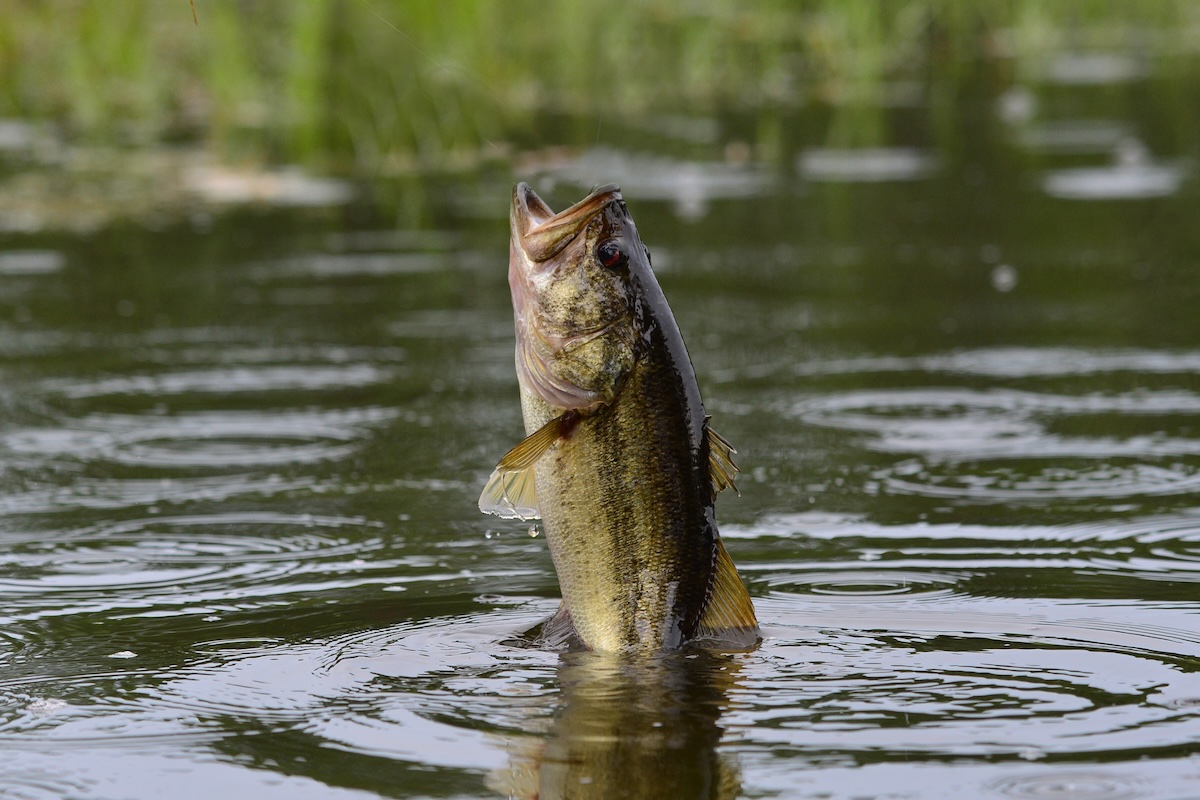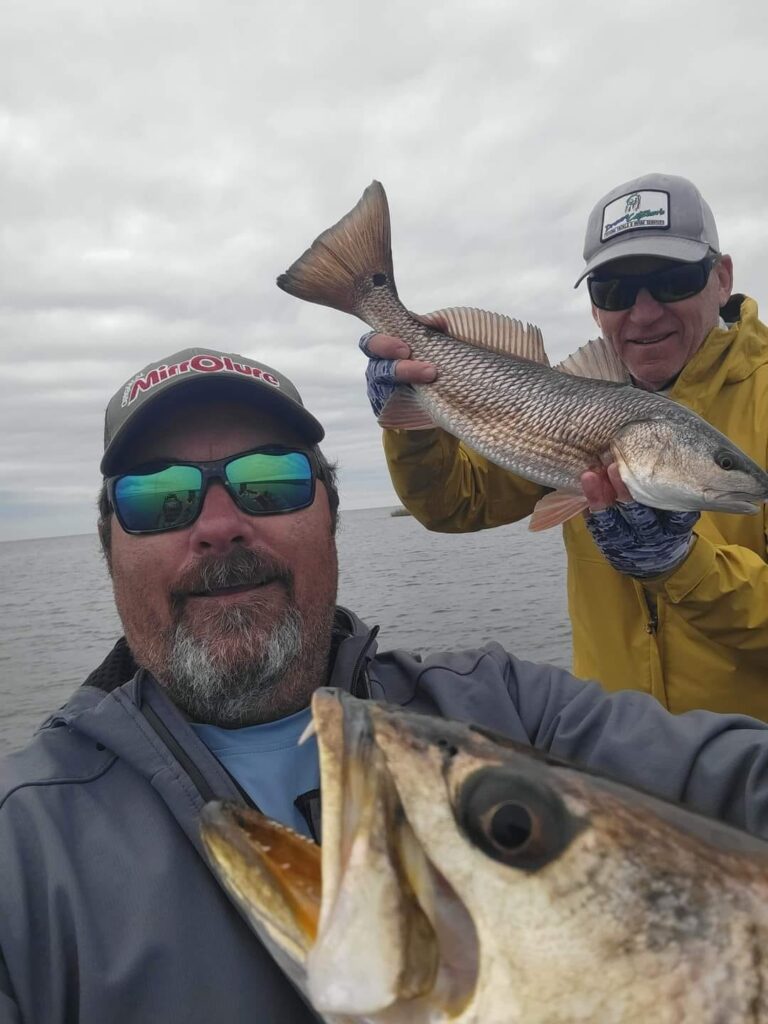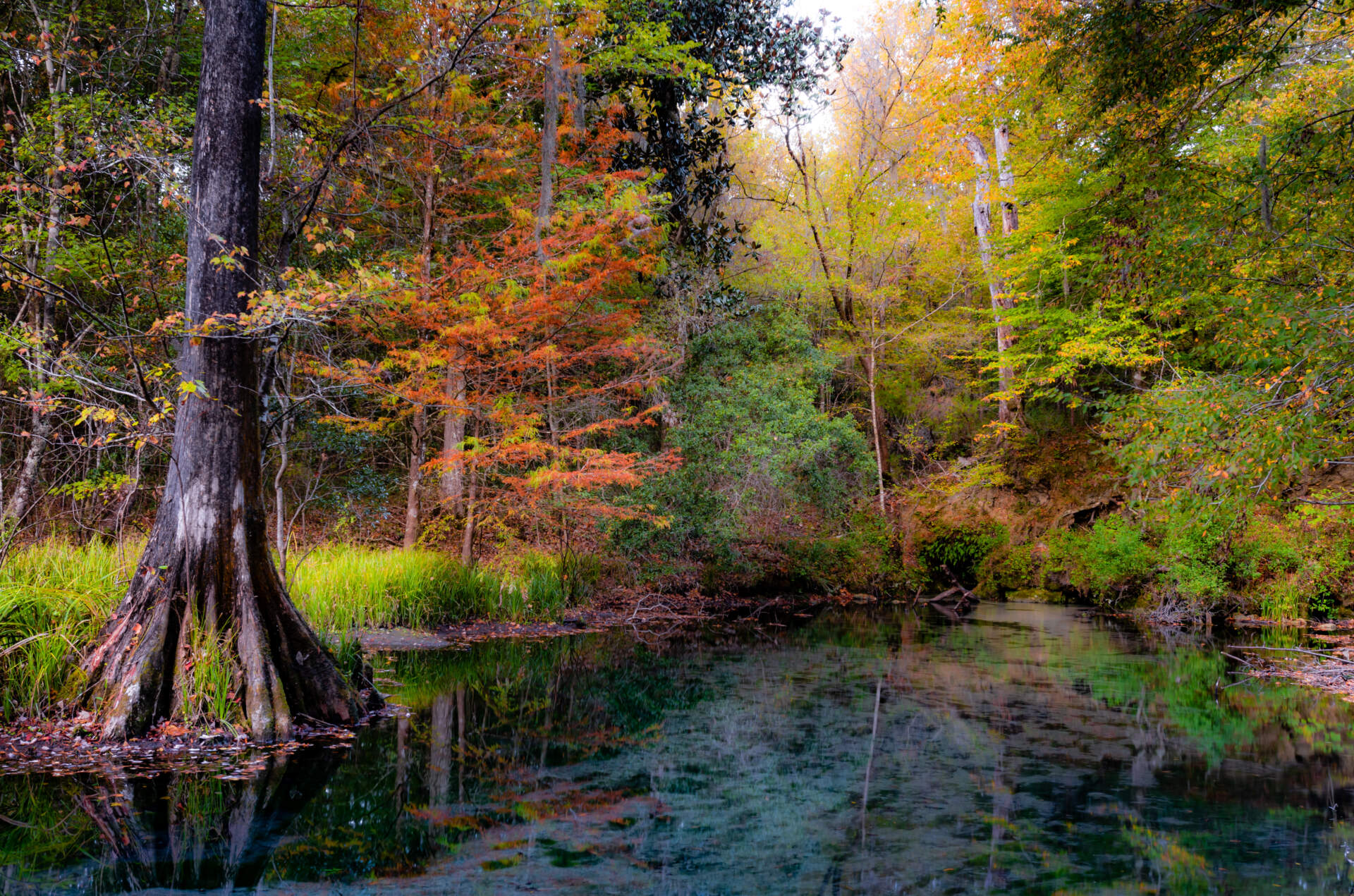The Econfina River is a stretch of winding, undeveloped water that cuts through the Florida Big Bend, offering some of the most unspoiled fishing opportunities in the state. Flowing from the pine flatwoods and cypress swamps of Taylor County, it eventually spills into the Gulf of Mexico, creating a diverse fishing environment that supports both freshwater and saltwater species. Unlike more developed river systems, the Econfina maintains a rugged, old-Florida feel, with little human interference beyond the occasional ramp or primitive launch. Fishermen looking for a place where nature still reigns will find it here.
Understanding the Econfina River’s Ecosystem
The Econfina River’s unique hydrology and geography create an environment that is constantly shifting. During heavy rainfall, the river’s flow can increase dramatically, flushing out debris and altering the structure of the riverbed. This natural reshaping influences fish movements and feeding patterns. During drought conditions, water levels drop significantly, concentrating fish into deeper pockets and making them easier to locate. Fishermen who understand these fluctuations can time their trips for maximum success.
The Econfina River is a blackwater river, meaning it is fed by rain and tannin-rich vegetation, giving it a dark, tea-colored appearance. The river’s slow-moving current and extensive marshlands allow for rich aquatic plant growth, which in turn supports a wide variety of fish. The upper portion of the river is largely freshwater, with bass, bream, and catfish thriving in the tannic waters. As the river approaches the coast, it transitions into a brackish estuary where redfish, speckled trout, and flounder become more common.
This transition zone is crucial to the overall ecosystem, as it acts as a nursery for many species. Young fish use the shallow, sheltered waters to grow before heading into deeper parts of the river or out into the Gulf. The brackish environment also creates a diverse forage base, including shrimp, crabs, and small baitfish, which in turn support larger predators. Seasonal shifts in salinity due to rainfall and tidal changes can influence fish movements, making knowledge of the river’s water conditions an essential factor in successful fishing.
Beyond fish, the Econfina River is home to a variety of wildlife that contribute to the ecosystem. Wading birds such as herons and egrets patrol the shallows, feeding on small fish and crustaceans. Ospreys and bald eagles often soar overhead, scanning the water for prey. Alligators inhabit the slower-moving sections of the river, while river otters are sometimes spotted playing along the banks. These creatures are an essential part of the river’s natural balance and add to the wild, untouched feel of the area.

Fishing the Upper Econfina
The upper reaches of the Econfina contain a mix of slow-moving, deep pools and fast-flowing narrow stretches, creating a range of habitats for different fish species. Fallen logs and submerged root systems serve as ideal hideouts for ambush predators, while the softer sandy bottoms are prime feeding areas for bottom-dwelling species. Fishermen who learn to read the water and target these specific structures can greatly improve their success rate.
The freshwater portion of the river is a hidden spot for bass fishermen. Largemouth bass dominate these waters, feeding on a steady diet of crayfish, small fish, and insects. The river’s dark water and abundance of submerged trees make it ideal for ambush predators, meaning bass often hold close to structure. Fallen logs, undercut banks, and overhanging vegetation provide prime ambush spots.
Seasonal movements of bass are heavily influenced by water temperature. In cooler months, bass tend to school in deeper holes and move sluggishly, while in warmer months, they become more aggressive and can be found in shallower water near weed beds and submerged timber. Pre-spawn periods in late winter and early spring are some of the best times to catch trophy-sized bass, as they feed heavily before moving into shallower spawning grounds.
Bream species such as bluegill and shellcracker are also common in the upper stretches. These fish thrive in the slower-moving pools where insects and small crustaceans are abundant. During the warmer months, they can be found nesting in sandy patches along the banks, making them easy targets for fishermen using live worms or crickets. The spawning season, typically occurring around the full moons of spring and summer, sees large congregations of bream in shallow waters, offering nonstop action for those who locate their beds.
Catfish, including channel, blue, and flathead varieties, lurk in the deeper holes of the upper Econfina. Night fishing can be particularly productive, as catfish become more active after dark. Fishermen targeting these fish typically use cut bait, chicken liver, or stink bait to draw them out. Flathead catfish, the largest of the three species, are apex predators in the river and are most commonly caught using live bait such as bream or bullheads. Some of the deeper holes along bends in the river are prime locations for catching trophy-sized catfish.
Transitioning Waters: The Brackish Zone
This zone is also where fishermen can encounter unique hybrid species, such as freshwater-saltwater crossbreeds of bass, which have adapted to the fluctuating salinity. Bait selection is particularly important here, as fish are responding to both freshwater and saltwater prey sources. Using a mix of artificial lures that mimic baitfish and live shrimp or mud minnows can be a game-changer.
Moving downriver, the Econfina begins to mix with tidal waters, creating a brackish environment that supports both freshwater and saltwater species. This transitional zone is one of the most dynamic fishing areas on the river, where a fisherman might catch a largemouth bass on one cast and a redfish on the next. This section is ideal for those who enjoy the unpredictability of mixed-species fishing.
One of the primary gamefish in this zone is the striped bass. Unlike their strictly freshwater cousins, these bass thrive in brackish environments and are known for their powerful runs. They tend to gather near deeper holes and eddies where baitfish are abundant. Fishermen using live mullet or artificial lures that mimic small fish have the best chances of landing one of these hard-fighting fish.
Redfish begin appearing in greater numbers as the water salinity increases. These fish are commonly found along the marsh edges, where they feed on shrimp, crabs, and baitfish. Sight fishing for redfish in shallow flats near the mouth of the river is a popular method, especially on clear days when their copper-colored backs are visible above the waterline.

The Lower Econfina and the Gulf Connection
Beyond speckled trout and redfish, this area also sees seasonal migrations of larger pelagic fish, such as king mackerel and even the occasional cobia. The oyster bars that line the lower river mouth act as natural filters, improving water clarity and attracting baitfish, which in turn bring in larger predators. Fishermen looking to capitalize on these feeding frenzies should watch for birds diving into the water, signaling a bait school under attack.
As the Econfina reaches its final miles before emptying into Apalachee Bay, it takes on more of a coastal estuary feel, with wide expanses of salt marsh and oyster bars lining the shores. This is where speckled trout become the primary target for fishermen. These fish prefer the slightly deeper grass flats just outside the river mouth, where they hunt for shrimp and baitfish. Early morning and late afternoon are the best times to catch them, as they tend to be most active during lower light conditions.
Flounder are also common in this part of the river. These bottom-dwelling fish hide in sandy patches near oyster beds, waiting to ambush passing prey. Fishermen who drift live bait along the bottom or use jigging techniques can often find success.
Spanish mackerel and tarpon are seasonal visitors to the lower Econfina. Spanish mackerel arrive in the warmer months, chasing schools of baitfish near the river mouth. They are known for their fast strikes and sharp teeth, requiring fishermen to use wire leaders to prevent cut-offs. Tarpon, on the other hand, migrate through in the late spring and summer, offering one of the most exciting fishing experiences on the river. These acrobatic fish put up a legendary fight, testing both skill and patience.
Making the Most of Your Econfina River Fishing Adventure
Fishing on the Econfina River offers an unparalleled opportunity to experience Florida’s waters in their most natural state. From the tannic, tree-lined freshwater stretches to the productive brackish and saltwater zones near the Gulf, this river holds a wealth of fishing potential for those willing to explore its depths. Fishermen who study its waters, adapt to seasonal changes, and utilize the right tactics can expect a rewarding experience with a wide variety of sought-after gamefish.
For those looking to maximize their time on the water, local knowledge is invaluable. While independent fishermen can certainly have success navigating the river and its many challenges, chartering a guided trip through an experienced outfitter can provide deeper insight into the best fishing spots, ideal techniques, and real-time conditions. Econfina Sporting Club offers expertly guided fishing charters tailored to both novice and seasoned fishermen. Our guides know every bend, every hidden hole, and every tide shift that influences fish behavior, ensuring the best possible chance for a successful day on the water.
Whether you’re targeting trophy bass in the upper reaches, battling powerful redfish in the brackish zone, or chasing speckled trout and seasonal pelagic species near the Gulf, a guided trip can take the guesswork out of your fishing adventure. Not only does this increase the likelihood of landing more fish, but it also allows for a more immersive experience, learning first-hand from those who have spent years mastering these waters.
For an unforgettable fishing experience on the Econfina River, book your trip with Econfina Sporting Club today!


